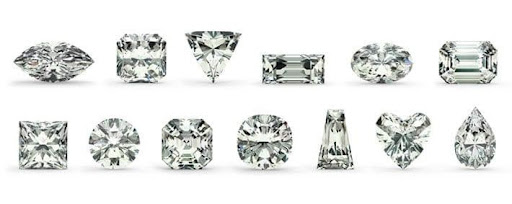
For centuries, diamonds have been a symbol of love, legend, and affluence, whether in the form of a family heirloom, an antique piece of jewelry, or an engagement ring or wedding ring. However, how much is a diamond? Only a small percentage of diamond owners are aware of the specific characteristics that differentiate one diamond from another. Having a basic understanding of these distinctions will help you get a fair price when selling a diamond.
It is rare for diamond owners to know exactly what makes one diamond more valuable than the other. In order to get the best price when selling a diamond, it's critical that you are aware of these distinctions.
Despite the fact that all diamonds are made of carbon, each one is unique and distinct. A diamond's internal and external characteristics, as well as its various shapes, sizes, colors, and other external characteristics, all serve to identify the diamond. Even if polished diamonds have some monetary value, how does one go about calculating this?
The value of a diamond is determined by a number of different factors. There are specific guidelines that the diamond industry professionals follow in order to dispel misconceptions about a diamond's quality and value. Diamond value estimation is based on the 4 C's established by the Gemological Institute of America. Included are:
Diamonds are valued based on their weight. Because carob tree seeds were once used to balance scales, the term 'carat' has been adopted as a standard unit of weight for diamonds.
Carats equal 200 milligrams, or 0.007055 ounces, in weight. Metric carats are divided into 100 points in the standardized system. One carat is equal to 0.5 carats in diamond weight.
The more weight you add to a package, the more expensive it will be. Although this is true for diamonds as well, the value of a diamond is affected by a variety of other factors.
Colored diamonds are available in a wide range of hues such as blue, pink and yellow. In terms of diamond color, white or colorless diamonds are by far the most common. The more colorless a diamond is, the more valuable it is.
Having a colorless diamond results in a diamond that sparkles more because light can travel through it more easily and disperse more evenly. There is a wide range of color options for diamonds, from colorless to yellow-brown, brown, and gray. Color alone can cause a significant difference in price between diamonds of the same cut, clarity, and carat weight.
Diamants are graded from "D" (completely colorless) to "Z" in terms of their whiteness (noticeable color). There is a completely different grading scale for colored diamonds (i.e. blue diamonds), and the more strongly colored they are, the more valuable.
Under carefully monitored conditions, a diamond is graded for color by comparison to other round brilliant diamonds of known color. Knowing that color grade doesn't refer to the face-up appearance of any particular stone, but rather body color is critical.
Clarity is a term used to describe a diamond's purity. The clarity of a diamond is determined by the number and location of inclusions or blemishes on the stone's surface. Diamonds with fewer flaws are more valuable because they are rarer.
Ten times magnification is used to grade and plot all diamonds. Numerous diamond grading laboratories assign clarity grades that range from flawless to slightly cloudy.
On the basis of five key factors, the clarity characteristics of a diamond and their impact on the diamond's clarity grade are established. Inclusions and blemishes are measured in terms of their number, location, type, size, and color or relief. When it comes to diamonds, there are two grades: IF (Internally Flawless) and I3 (Internally Imperfect) (Included, Level 3).
Diamonds can only be distinguished by a trained eye up to a certain degree of clarity. The higher the clarity of a diamond, the more valuable it is; thus, the higher the price.
When it comes to determining a diamond's value, these features and irregularities can either be positive or negative. The quality of a diamond's clarity sets it apart from other diamonds, distinguishes it from imitations, and provides valuable information to gemologists and scientists.
Because of this, it is important to note that the value and brilliance of a diamond can be increased or decreased by its cutter.
The cut of a diamond determines how much light the diamond reflects. When a diamond's cut is perfect, it allows the perfect amount of light to interact with all of its facets and be returned to the viewer's eye, it brings out the fire and beauty of the stone.
Based on the three optical effects it can produce, the cut is defined.
The light's performance is determined by the diamond's proportions. The overall appeal and beauty of a diamond is influenced by the proportions and polish of the diamond's surface.
If you're trying to figure out how much a diamond is worth, keep in mind that the rarity of one or more of the Four Cs has an impact on the price. Diamonds larger than one carat are more expensive per carat because of their scarcity. Colorless diamonds are also much more expensive than their yellow or gray-tinged counterparts because they are so much rarer.

